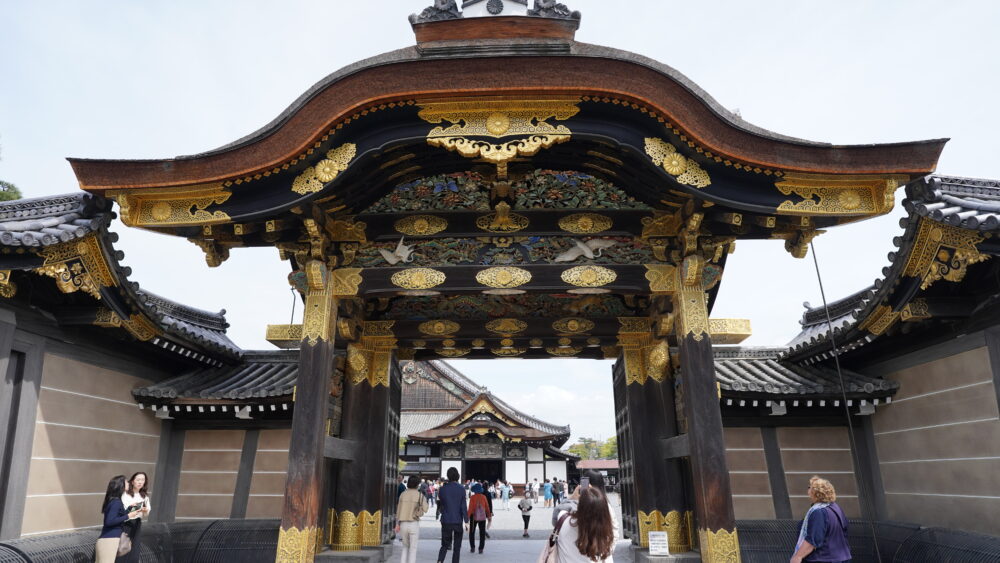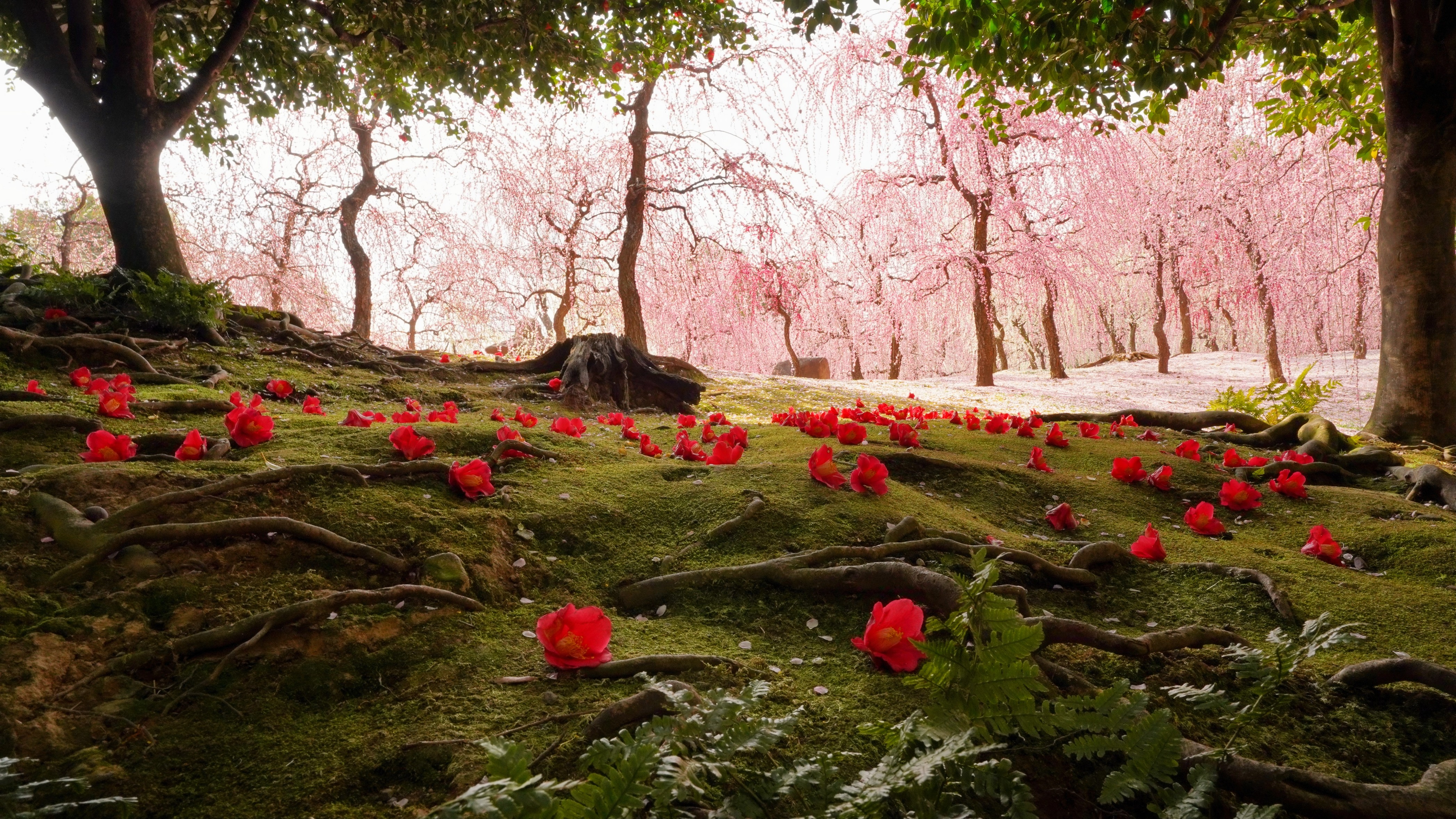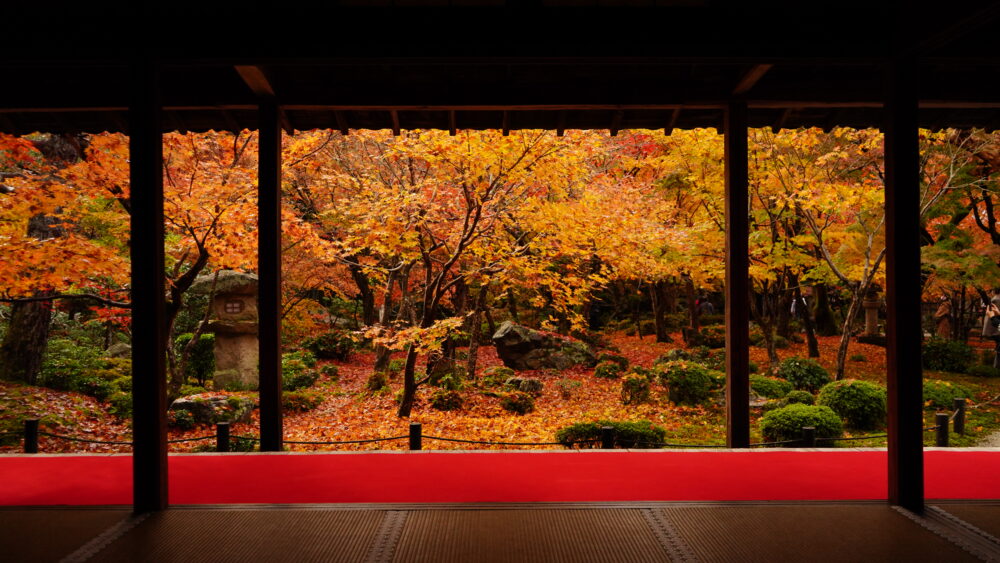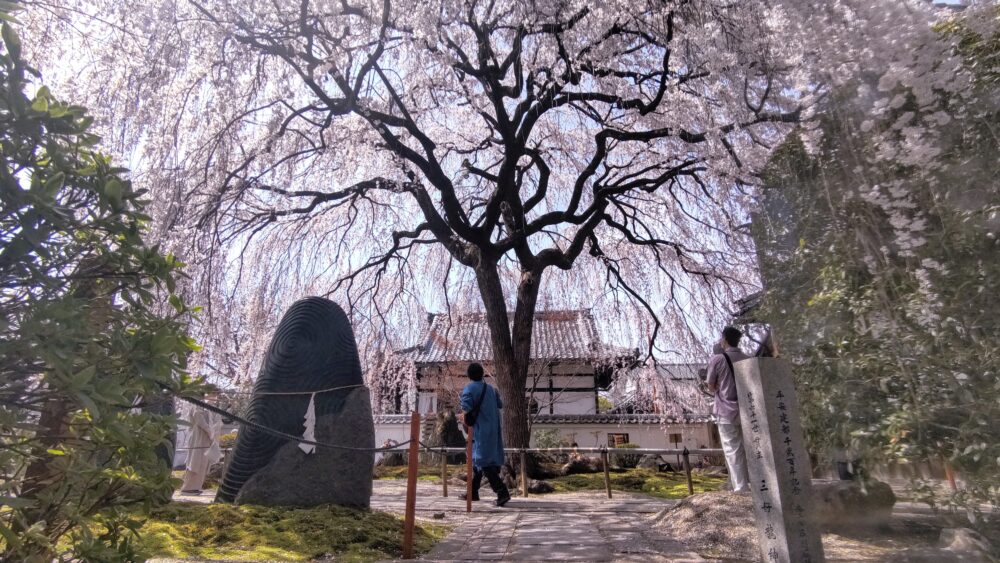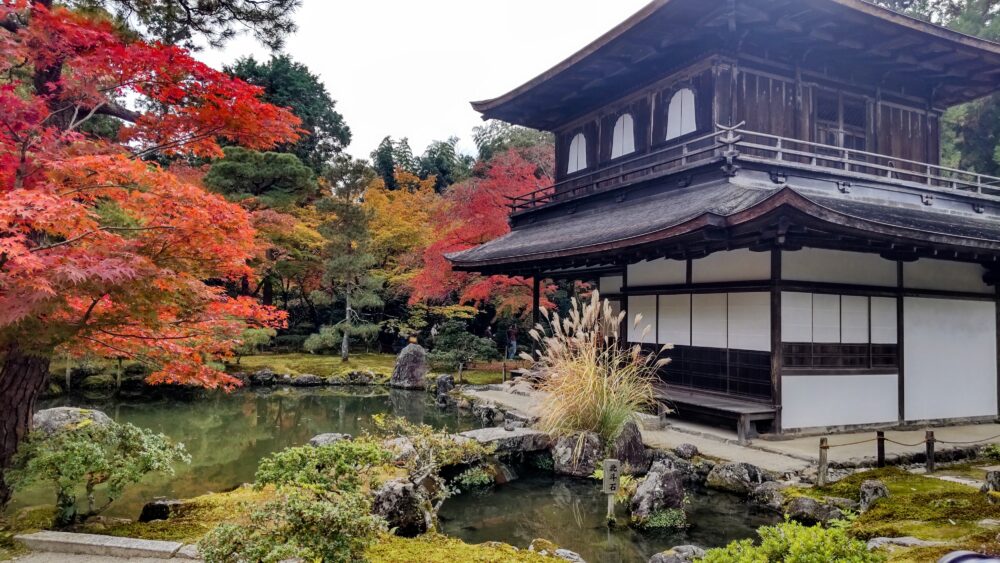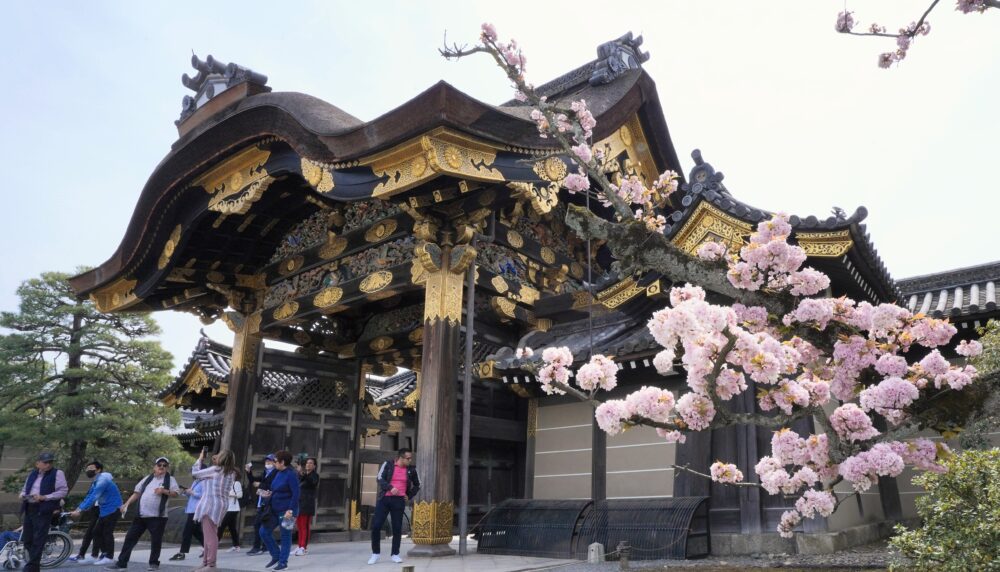Tenjuan : All you Need to Know in 2025
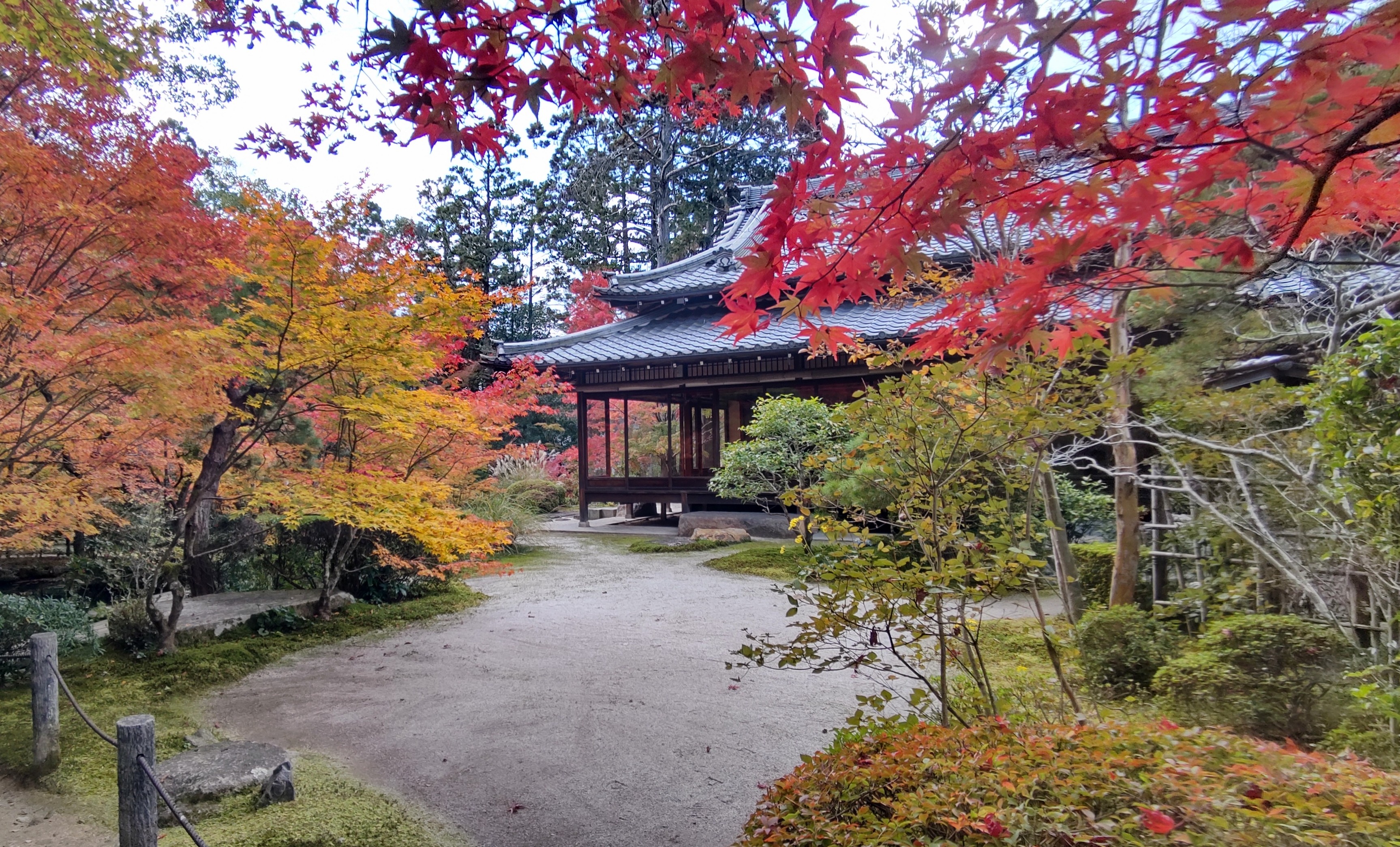
Escape the crowds and discover a secret Kyoto treasure: Tenjuan, a sub-temple of Nanzen-ji Temple, located in Sakyo-ku, the northeastern part of Kyoto. Popular tourist spots such as Eikando, Nanzen-ji Temple, and the Philosopher’s Path are nearby.
Tenshu-an is not well known, and there are few visitors. However, It has two historic and beautiful gardens. The fall foliage and the summer water lily pond are especially breathtaking.. It’s truly a hidden gem and well worth a visit. Here is all you need to know before visiting Tenjuan.
History
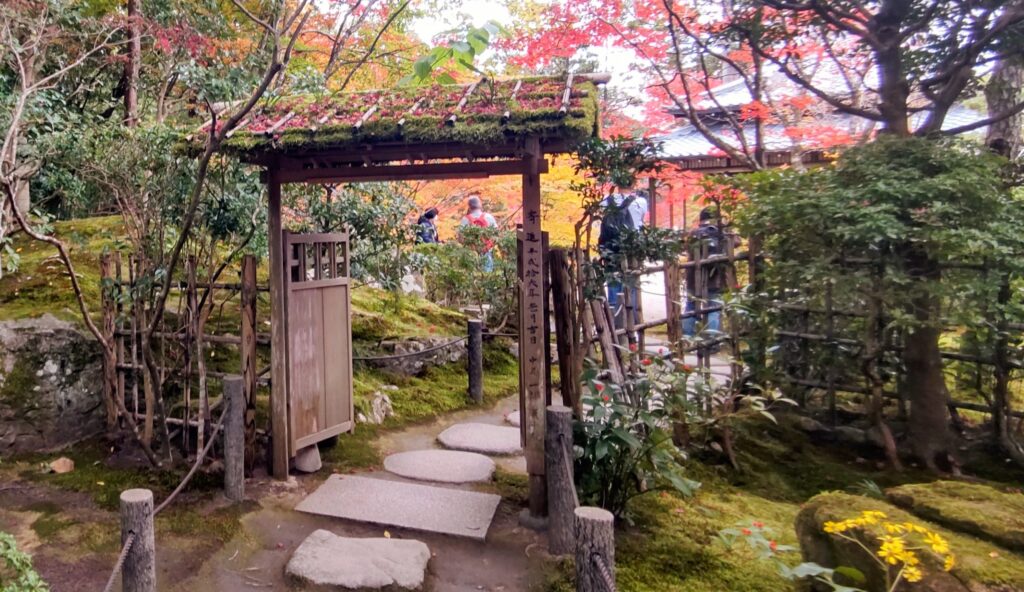
Tenjuan is one of the sub-temples of Nanzen-ji Temple and was established in 1339 by Kokan Shiren, the 15th abbot of Nanzen-ji, as a lodging attached to the founder’s stupa of the main temple. This temple was burned down during the Onin War (1467-1477). In 1602, Tenjuan was rebuilt with the support of Hosokawa Yuzai. The abbot’s quarters, main gate, old library, and pagoda were reconstructed.
Features
Kuri
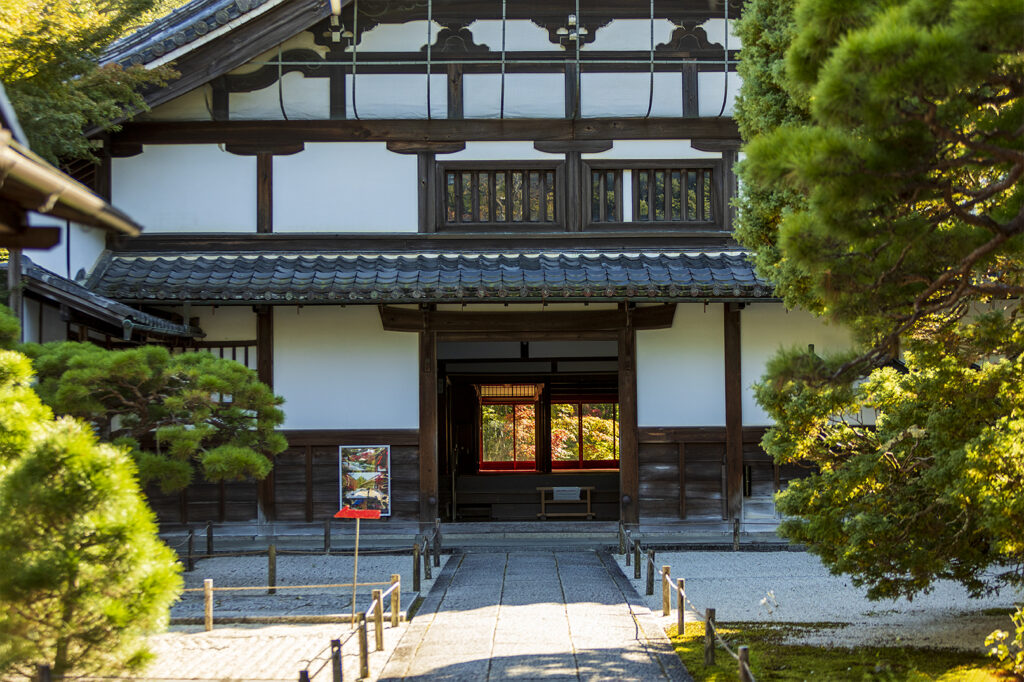
Kuri, a building visible from the entrance to Tenjuan, serves as the living quarters for the priests. Through this structure, visitors can see a beautiful garden beyond. During the fall foliage season, the garden is transformed into a mesmerizing landscape of fiery red leaves.
Daishoin
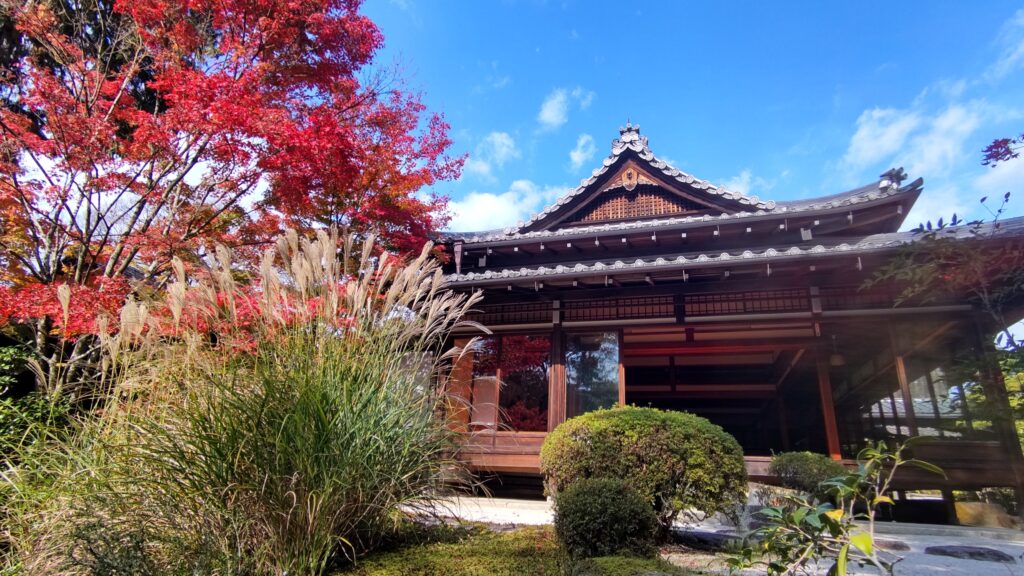
Daishoin is a large building where monks study. The surrounding area, adorned with swaying pampas grass and vibrant maple leaves, creates a stunning autumn scene.
Gardens
Tenjuan has two beautiful gardens.
Enmoku Garden (East Garden)
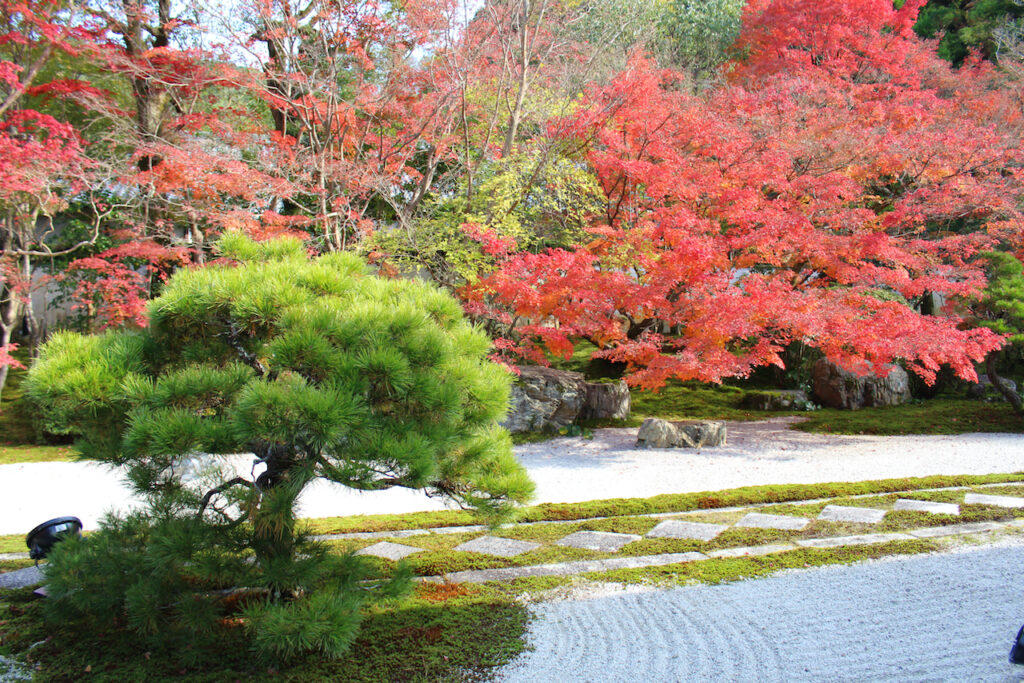
Enmoku Garden is a karesansui (Japanese dry) garden designed by Kobori Enshu, an Edo period garden designer who also designed the gardens of Nijo Castle, Kodai-ji Temple, and Seijyoin Temple within Kiyomizu-dera Temple. The arrangement of rectangular quarried stones is a departure from the traditional natural arrangement, creating an artificial impression of a modern garden. The black pine trees at the front symbolize a forest and an island, while the white gravel patterned like waves represents the ocean. The fall foliage of the maple trees in the back is also magnificent.
Nan Tei (South Garden)
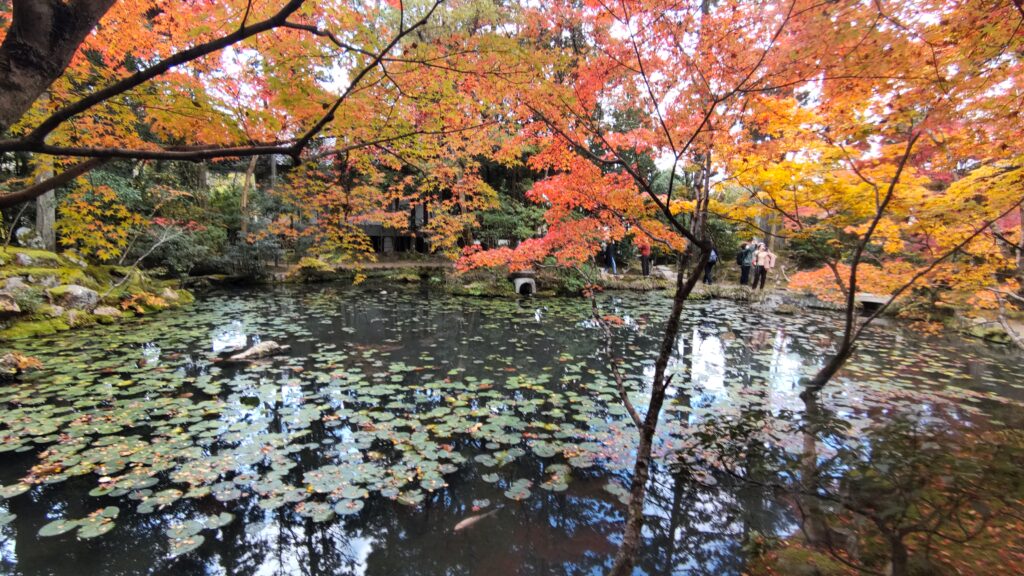
Nan Tei (South Garden) is a strolling pond garden created during the late Kamakura period and the Nanboku-chō period (14th century). Centered around a large pond and surrounded by maple trees, the garden has a walkway that allows visitors to stroll around the entire pond. Carp and water lilies inhabit the pond.
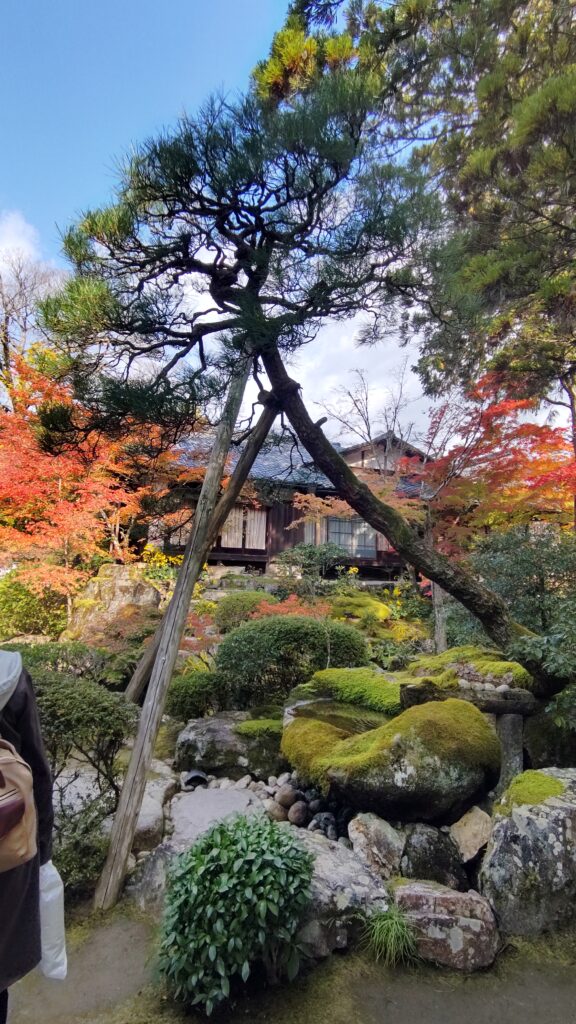
A stone tsukubai (a water basin for purification) is located in the garden. While it is customary to plant low shrubs near the tsukubai, in this case a large black pine tree overshadows it.
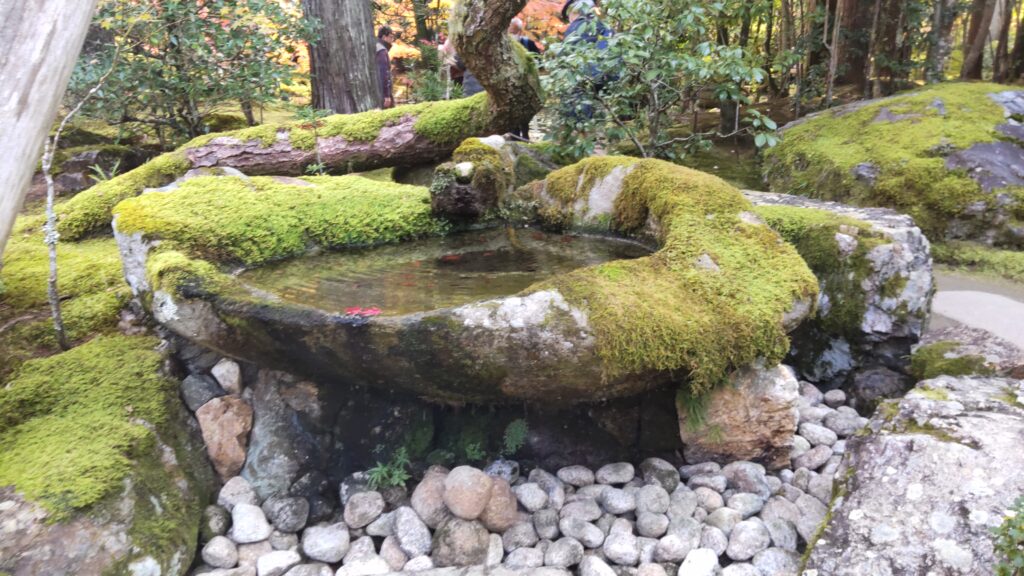
The Tsukubai (water basin), a unique and gigantic single rock covered with moss, stands out among the other gardens. Its ancient charm is matched by the majestic pine tree beside it.
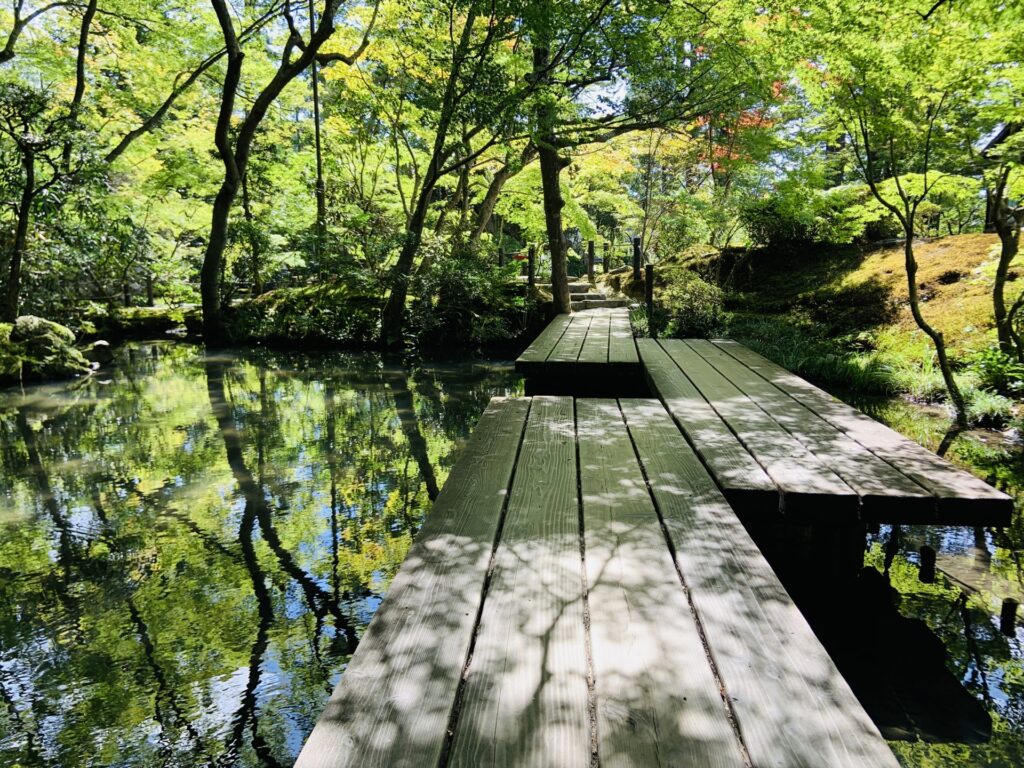
Yatsuhashi Bridge spanning the eastern pond in the South Garden. Yatsuhashi is a type of Japanese bridge characterized by its zigzag shape. Often associated with irises due to a waka (Japanese poem) in the Tale of Ise that mentions the combination of yatsuhashi and irises, these bridges are usually built where both elements are planted. In this particular case, however, only the yatsuhashi bridge was built.
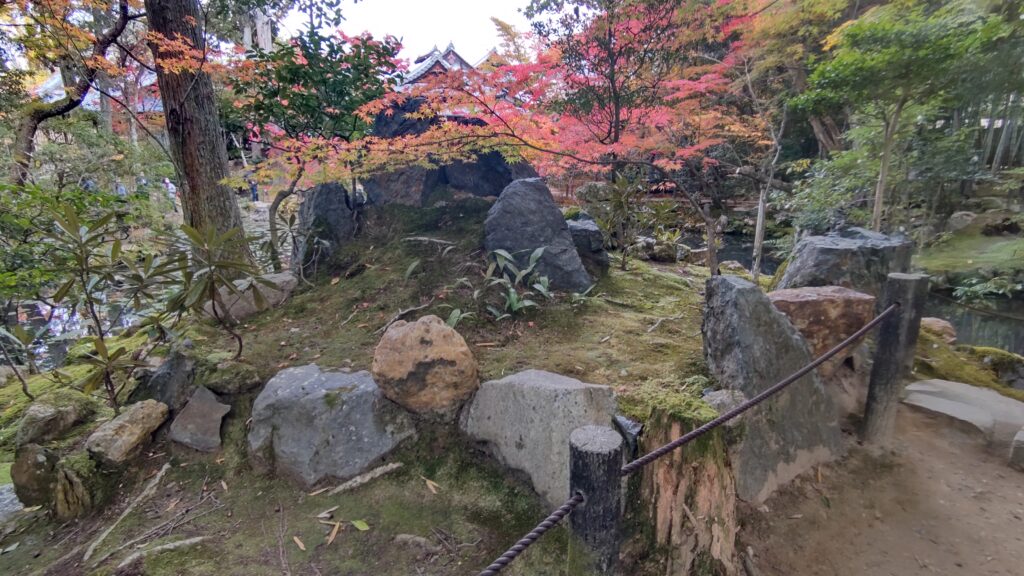
There is a arranging rocks representing Mount Penglai, inspired by Chinese mythology. At the summit of the mountain, there are three stones arranged to symbolize the Buddha triad, image of a Buddha attended by two Bodhisattvas, influenced by Buddhist beliefs.
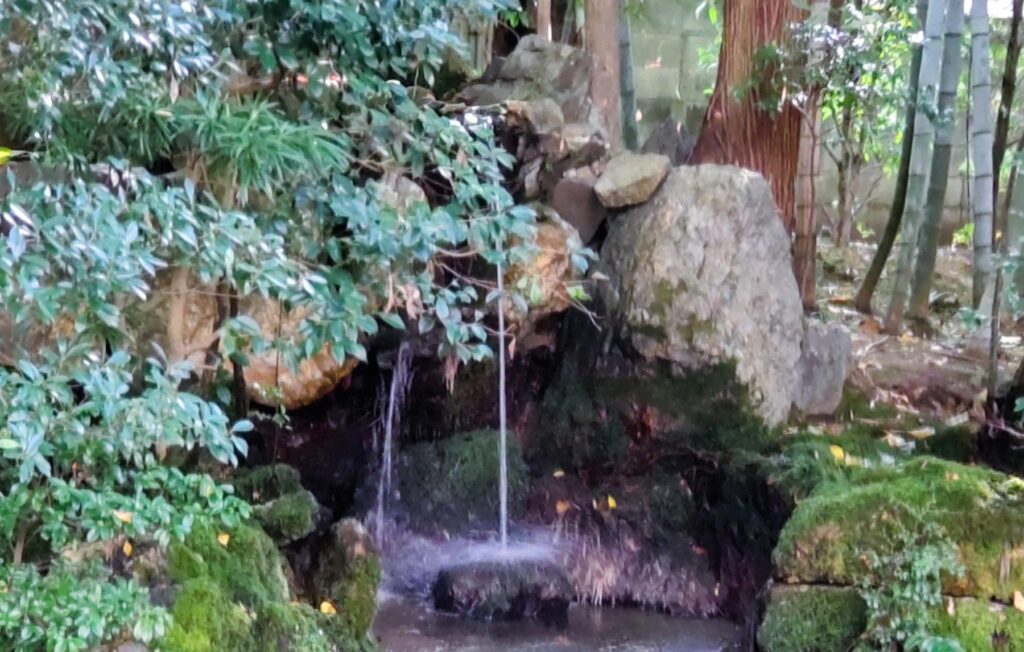
In the Nan Tei garden, there is a two-tiered waterfall that is believed to have been restored in the early Edo period. This waterfall shows the “hanare ochi” style, where the water doesn’t fall on the rock face but separately, creating a unique visual effect. At the base of the waterfall is a “mizu uke ishi” or water-receiving stone.
Best time to visit
Fall Season (Mid to Late November.)
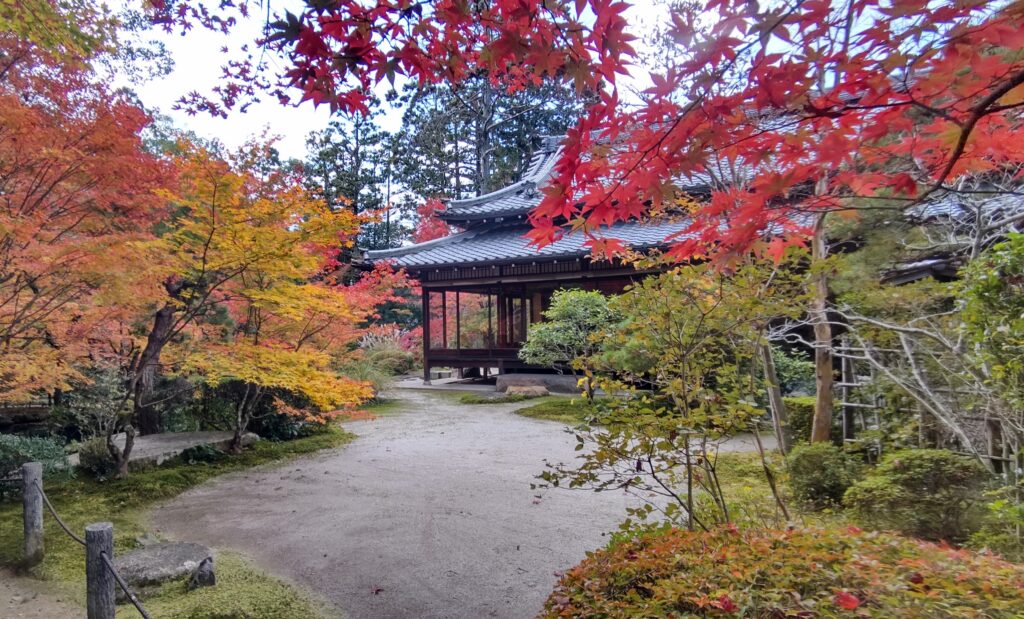
The Tenjuan Garden is adorned with maple trees that turn bright shades of red in the fall. The intensity of the color of the maple leaves varies depending on the amount of sunlight they receive. Because the garden faces east, the maple trees are exposed to different amounts of sunlight, creating a unique gradient of autumn colors that is characteristic of this garden. The peak season for viewing the maple leaves is usually from late November to early December.
Summer Season (Early June to Late July)
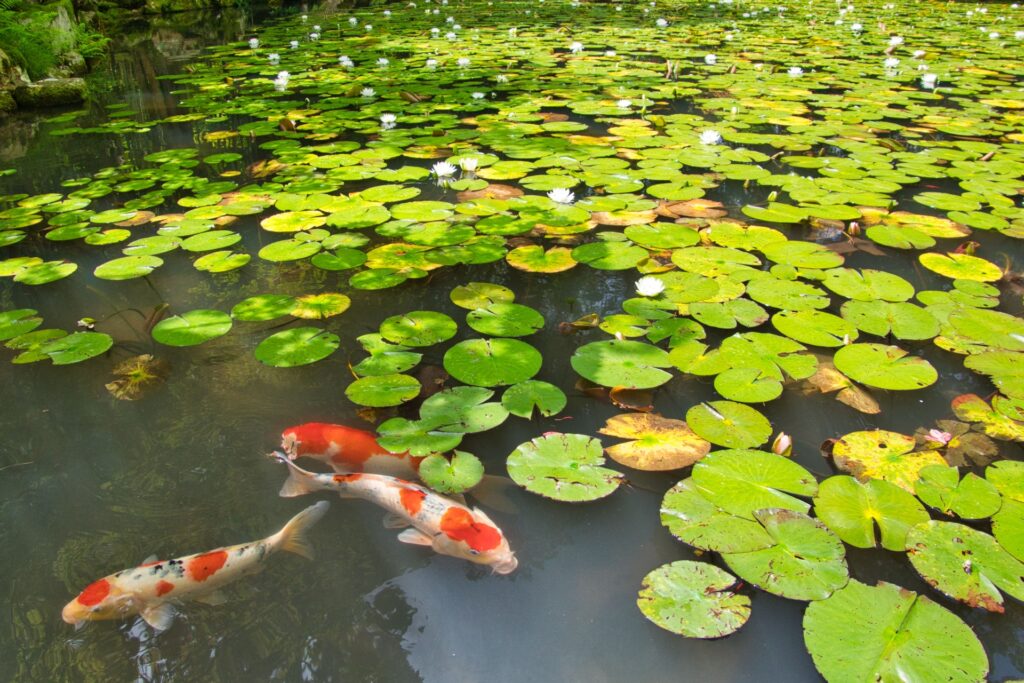
In summer, water lilies bloom in the pond of the South Garden. There are also koi carp, and visitors can enjoy the magical sight of water lilies and carp swimming together. The water lilies usually bloom from the beginning of June to the end of July. The East Garden has many maple trees, making it a popular destination for fall foliage viewing. However, visitors can also enjoy the fresh green leaves in early summer.
Information
Hours and Fees
Open Hours
| Period | Time |
|---|---|
| March.1st to November.14th | 9:00 a.m. – 5:00 p.m. |
| November. 15th to February.28th | 9:00 a.m. – 4:30 p.m. |
Holiday
From the afternoon of November 11th to the morning of November 12th
Entrance Fee
Adults : 500 yen
High school students : 400 yen
Elementary and junior high school students : 300 yen
Camera Policy
The following photography is prohibited at Tenju-an Temple:
- Use of monopods or tripods.
- Photography of models.
- Group photography.
- Photography in wedding dresses, unusual costumes, or inappropriate clothing.
Adress
〒606-8435 Kyoto, Sakyo Ward, Nanzenji Fukuchicho, 86−8
How to get to Tenjuan
In the fall, Kyoto’s roads can be quite congested. I recommend taking the train and walking to Tenryu-ji Temple.
- From Kyoto Station, take the Karasuma Line (Green Line) and get off at Karasuke Oike Station, then transfer to the Tozai Line (Red Line) and get off at Keage Station.
- Or, take the JR line to Yamashina Station(Blue Line), then transfer to the Kyoto Subway Tozai Line(Red Line) and get off at Keage Station.
- It’s 7minute-walking from Keage station to Tenjuan.
While trains are the most reliable way to get there on time, it involves a bit of walking. During less crowded times (outside of March, April, November, and December), consider taking a taxi or using buses for a more direct and comfortable trip. - If you prefer to take the bus, bus No. 5 from Kyoto Station’s North Exit will take you to the Nanzenji Eikando-mich bus stop, which is a 9-minute walk from the shrine.
- It takes about 22 minutes by taxi from Kyoto Station’s North Exit.
Tourist attractions nearby
- Nanzen-ji Temple (2 minutes walk from Tenju-an)
Nanzen-ji Temple is the head temple of Tenju-an and a Rinzai Zen temple. It was founded in 1291 by Emperor Kameyama at the invitation of Zen master Mukan Fumon. The temple boasts important cultural properties such as the Sanmon Gate and the Karessansui (Japanese dry) garden of the Hojo Hall (abbot’s quarters). - Mizuro-kyo Aqueduct (2-minute walk from Tenju-an)
Mizuro-kyo Aqueduct is a brick and granite arched bridge that carries water from Biwako Lake. Its design harmonizes with the surrounding atmosphere of Nanzen-ji Temple. - Eikan-do Zenrin-ji Temple (7-minute walk from Tenju-an)
Eikan-do Zenrin-ji Temple is the head temple of the Nishiyama Zenrin-ji School of the Jodo sect. Founded in 853 as a training ground for Shingon Buddhist monks, the temple is famous for its stunning fall foliage, earning it the nickname “Momiji-dera” (Maple Temple). It attracts many visitors during the fall foliage season.
Link and Resources
Official Website
Nanzenji Temple(Japanese text only)
